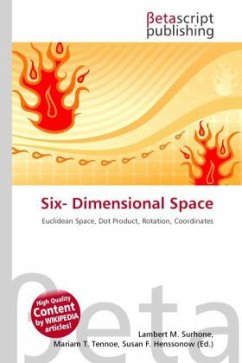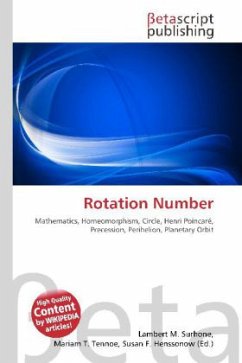
Rotation Operator (Vector Space)
Versandkostenfrei!
Versandfertig in 6-10 Tagen
26,99 €
inkl. MwSt.

PAYBACK Punkte
13 °P sammeln!
Please note that the content of this book primarily consists of articles available from Wikipedia or other free sources online. A rotation of axes is a form of Euclidean transformation in which the entire xy-coordinate system is rotated in the counter-clockwise direction with respect to the origin (0, 0) through a scalar quantity denoted by . With the exception of the degenerate cases, if a general second-degree equation has a Bxy term, then Ax^2 + Bxy + Cy^2 + Dx + Ey + F = 0 represents one of the 3 conic sections, namely, an ellipse, hyperbola, or parabola. If a locus is defined on the xy-co...
Please note that the content of this book primarily consists of articles available from Wikipedia or other free sources online. A rotation of axes is a form of Euclidean transformation in which the entire xy-coordinate system is rotated in the counter-clockwise direction with respect to the origin (0, 0) through a scalar quantity denoted by . With the exception of the degenerate cases, if a general second-degree equation has a Bxy term, then Ax^2 + Bxy + Cy^2 + Dx + Ey + F = 0 represents one of the 3 conic sections, namely, an ellipse, hyperbola, or parabola. If a locus is defined on the xy-coordinate system as left(x, yright), then it is denoted as left(xcos theta + ysin theta, -xsin theta + ycos thetaright) on the rotated x''y''-coordinate system. Likewise, if a locus is defined on the x''y''-coordinate system as left(x^prime , y^primeright), then it is denoted as left(x^primecos theta - y^primesin theta, x^primesin theta + y^primecos thetaright) on the "un-rotated" xy-coordinate system.












